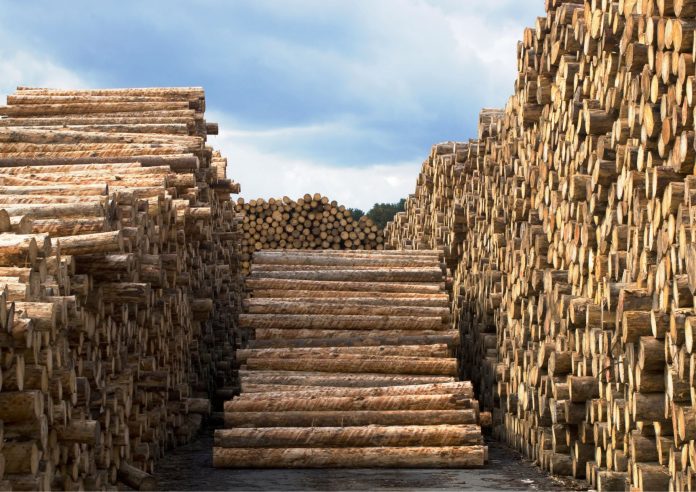Timber construction can provide a sustainable alternative to energy-intensive materials to help architects, engineers and contractors cut the industry’s carbon emissions while tackling ever-increasing demands for buildings and infrastructure, says David Hopkins, CEO of Timber Development UK
Construction and the built environment are responsible for approximately 40% of global energy-related CO2 emissions. A significant percentage of this comes from the extraction, processing and energy-intensive manufacturing of building products.
To meet targets for net zero CO2 emissions by 2050, the construction industry must halve carbon emissions each decade, while still meeting the needs of a growing urban population, responding to the increasing demand for new buildings and tackling the urgent requirement to retrofit 29m existing homes in the UK alone to reduce energy consumption.
Emissions from the built environment come from two main sources: the energy we consume within buildings for heating, cooling and power (operational emissions) and the emissions associated with the extraction, processing and manufacture of building products (embodied emissions).
Energy-intensive materials used in modern construction have been major contributors to our current climate predicament. Cement is a major contributor to emissions: if it were a country, it would be the third biggest carbon emitter in the world. Steel too is an intensely energy-hungry material.
Increasing the use of wood and timber in our built environment may be part of the answer we are looking for.
Timber construction products absorb more carbon than is emitted through their production
As it stands, wood is the only sustainable structural material that grows worldwide which can enable substantial decarbonisation of the built environment based on existing business models and proven technology.
Lifecycle assessment studies consistently show that timber products absorb and store more carbon than is emitted through their production – which means timber can actively reduce carbon emissions rather than adding to them on projects.
Using more wood in the built environment is also a sustainable carbon-capture solution – as once harvested, forests are replanted or allowed to regenerate naturally.
The business case for timber construction
Of course, this goes beyond the bigger environmental picture and there are multiple reasons businesses from design to build should be looking towards the introduction of more sustainable timber solutions.
For one, we are increasingly seeing UK government spending harnessed to advantage climate-friendly solutions for public sector construction, with contracts including requirements to demonstrate how carbon savings will be made.
Meanwhile, globally we are seeing more policymakers embrace policies that reduce carbon emissions, with the EU and North America both introducing regulations on embodied carbon.
We are also seeing the decarbonisation of investment portfolios thanks to regulation in Europe. Businesses in all industries are increasingly being penalised for bad ESG practices. With construction notorious for negative environmental impacts, contractors will need to avoid becoming the black sheep in investment portfolios.
Where can you use timber in construction?
There is a clear need to deliver more affordable energy efficient housing, retrofit solutions and carbon-neutral public sector buildings. If you work in any of these areas, there are timber solutions you should consider:
-
Timber and housebuilding
There is a need for affordable homes all over the world, but any upscaling will need to be done in a cost- and climate-effective way. This can be done using offsite prefabrication based on light, high-quality, easy-to-transport, and sustainable, wood-based solutions.
The embodied carbon of a house constructed using an offsite panelised timber frame (with the majority embodied in the concrete substructure) is approximately half of that using traditional masonry.
More than 85% of Scottish new build houses are built using timber frames, compared with just 22% in England. This highlights that there is a significant opportunity in this area through already established UK supply chains.
-
Timber and retrofit
Timber has natural insulating properties – being 10 times more thermally efficient than concrete and 400 times more thermally efficient than steel -helping to reduce operational emissions created due to heat loss within buildings. This makes timber and timber products ideal for the renovation and improvement of energy performance in existing buildings.
Also, as with new builds, the use of timber can also provide significant carbon savings in retrofit projects, as well as weight and flexibility advantages in larger projects.
-
Mass timber for massive projects
In terms of the public sector and larger commercial buildings, innovative engineered timber products are filling the gaps left by traditional timber. Some new timber buildings are already reaching up to 18 storeys in height – as products such as Cross Laminated Timber (CLT), Glued Laminated Timber (Glulam) and Laminated Veneered Lumber (LVL) match the structural strength of steel and concrete whilst saving carbon.
How to start the shift to timber construction
Architects, engineers, urbanists, and all those who help shape the way we live and move around our cities have a deep responsibility to be aware of, and design for, the impact of climate change. However, the story around net zero does not exist in a vacuum and it would be naïve not to consider the investment that would be needed in the context of economic woes and a chronic construction skills shortage – not least in green areas.
However, at TDUK we believe that businesses should not neglect to prepare for better times. While a wholesale shift to timber construction would likely be impossible for many businesses right now, you should be encouraging designers, engineers and project managers to undertake timber construction skills CPD.
Now is also the time to begin speaking to and familiarising yourself with the timber supply chain. Afterall, you don’t want to be left behind when the construction industry recovers.
David Hopkins

CEO
Timber Development UK
Tel: +44 (0)20 3205 0067

















